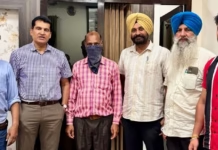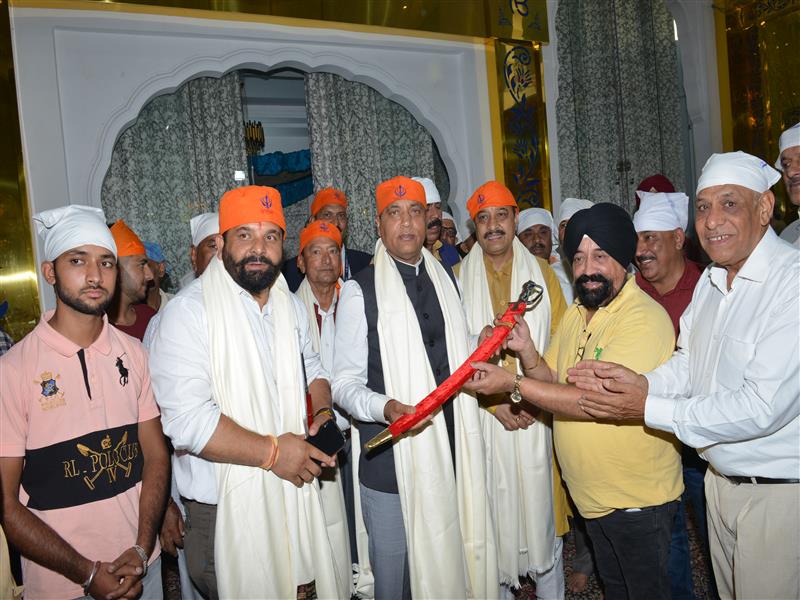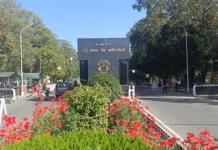Patiala Foundation laid on 12th Feb at Qila Mubarak
Patiala, the land of serene forts, gregarious people and extravagant cultures, turned 255 this year. The foundation stone laid at Qila Mubarak by valiant Baba Ala Singh, founder of Patiala, on 12th February 1763. The city was originally known at ‘Pati Ala’ (area under Ala Singh), which later came to be known as Patiala. The rulers of the erstwhile states of Patiala trace their ancestry to Chaudhari Phul clan.
Qila Mubarak:
Taking a leap back into history, from the foundation fort Qila Mubarak which was the residence of legendary Patiala dynasty. The fort cum palace, located in the midst of the city, boasts the Patiala Style architect which is a synthesis of Rajashthani and Pahadi architect. The walls of this palace have been exquisitely carved with birds and flowers impressions.
The palace spread over 10 acres was built under the thoughtful support of Maharaja Ala Singh in 1764. During its days of inception, QilaMubark was merely a kuch-garhi of a mud fort that was later renovated into a rambling two-storied mansion with an imposing entrance with intricate arches. A large part of the fort however has been converted into a heritage museum.
The residential part of the palace that was inhabited by the royal members of the Patiala dynasty was known as the QilaAndroon or the Inner Fort. Elegant living chambers for the royal prisoners appropriately named the Jail Walla Palace accompany them. Besides the Moti Palace and Sheesh Palace, the Rajmata Palace, the Palace of Colors and the Palace of the Moon are the other eminent apartments the lavishly furnished and elegantly decorated palatial apartments.
Other trivial buildings like the Putli (Puppet) Ghar and BaghGhar or the Garden House with vibrantly colored rooms also deserve special mention.

Sheesh Mahal:
Next in line to the grandeur image of the city is the Sheesh Mahal that was built up Maharaja Narendra Singh who was a great patron of literature, music and art. He invited painters from Kangra and Rajasthan to paint the walls of Sheesh Mahal. Their works depicting the vision in poetry of Keshav, Surdas and Bihari, both in line and colour, are a treat to the eye of the beholder. The themes of these paintings embrace mythology, legends, Raga-Ragni, Nayak-Nayika and Bara-masa in Rajasthani style. These walls and ceilings are also rich in floral designs. The interior casts a Kaleidoscope phantasmagoria of myriad images and multi-coloured lights. Now turned into museum, it has a rich collection of miniature paintings of the middle of 19th century. Themes of these paintings are based on the Geet Gobinda or Jaya Deva’s poetry. The Kangra paintings depicting the, Krishan Lila reflect the highest professional and delicate taste. Paintings displaying the Raga-mala of the Rajasthan schools and that of the Mughal give a visual meaning to the Ragas.
Fine object of Tibetan art particularly carvings of Punjab, sculpture of different kinds of metals, royal wooden carved furniture and large number of Kashmiri and Burmese objects are exhibited there.
In the foreground of the Sheesh Mahal, there is a huge tank with two towers on both sides. Along with it is the suspended rope bridge popularly known as Lakshman Jhula, which connects the palace with the Bansar Ghar housing the Natural History Gallery. Here the stuffed animals and birds are displayed. The rest of the palace now houses the prestigious Subhash Chander Bose National Institute of Sports.
Moti Bagh Palace:
Another architectural landmark is the Moti Bagh Palace constructed in 1847 by Maharaja Narendra Singh at a cost of Rs. 5 lakhs; Maharaja Narendra Singh was as great a builder as Swai Jai Singh of Jaipur. The Moti Bagh Palace was designed on the pattern of Shalimar Gardens of Lahore with terraces and water channels.
The royal hierarchy box:
In 1763 Baba Ala Singh laid the foundation of the Patiala fort known as Qila Mubarak, around which the present city of Patiala is built. After the third battle of Panipat in 1761 in which the Marathas were defeated, the writ of the Afghans prevailed throughout Punjab. It is at this stage that the rulers of Patiala began to acquire ensigns of royalty. Ahmed Shah Abadali bestowed upon Ala Singh furm and banner, after latter’s death, his grandson Amar Singh succeeded and received the title of Raja-I-Rajjan. He was also allowed to strike coins. After forty years of ceaseless struggle with the Mughals, Afghans and Marathas the borders of the Patiala state witnessed the trailing blaze of Ranjit Singh in the North and the other of the British in the east. Bestowed with the grit and instinct of survival, making right choice at right time the Raja of Patiala entered in a treaty with the British against Ranjit Singh in 1808, thus becoming collaborators in the ground empire building process by the British in the sub-continent of India. The British treated the rulers of Patiala, such as Karam Singh, Narinder Singh, Mahendra Singh, Rajinder Singh, Bhupinder Singh and Yadvindra Singh with respect and dignity .His son Yadvindra Singh was among those Indian princesses who readily came forward to sign the Instrument of accession, thus facilitating the process of national integration.
The first Maharaja of Patiala was Baba Ala Singh (1695–1765), who was granted the title by Ahmed Shah Abdali in 1764.











